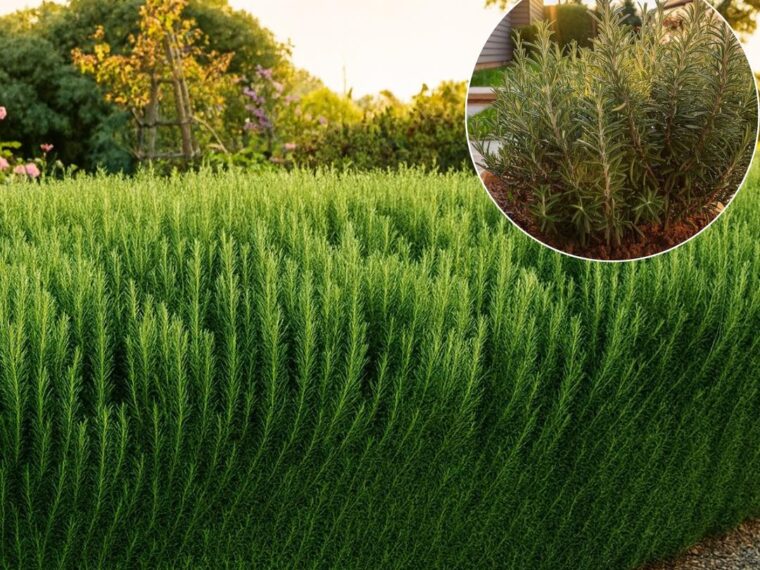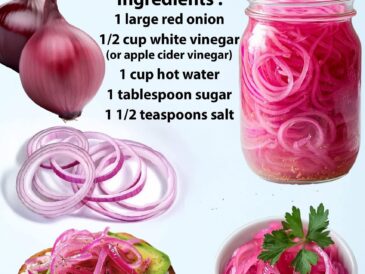It’s tempting to think more fertilizer equals more growth — but not for rosemary. Overfeeding leads to soft, floppy growth and reduced aroma. This herb thrives in modest, low-nutrient soil.
Feeding Schedule:
- Apply a diluted balanced fertilizer (10-10-10) every 6–8 weeks in spring and summer.
- Compost tea or fish emulsion works great as a gentle boost.
- Stop feeding in late summer so the plant can prepare for winter dormancy.
Remember: A slightly hungry rosemary plant is a healthy one.
❄️ 7. Protect from Frost and Harsh Winds
While rosemary is evergreen and tough, it’s not fully frost-proof. A long freeze can kill it right to the roots.
If you live in colder zones (5–7):
- Grow rosemary in containers that can move indoors before frost.
- Keep it in a bright, sunny window with good air circulation.
- Water lightly — just enough to keep soil barely moist.
In mild climates (zones 8–10):
- Mulch the base with pine needles or straw to insulate roots.
- Avoid dense, wet mulch that traps moisture.
- Protect from wind and frost with burlap or a simple frame during extreme cold.
With this care, your rosemary can live 10 years or more, remaining vibrant and aromatic through the seasons.
🌿 8. Propagate for Endless Rosemary Plants
Once you have one thriving rosemary, you can easily grow more — for free. Propagation is not only simple but keeps your rosemary line young and vigorous.
Propagation Steps:
- Take a 4–6 inch cutting from a healthy, non-flowering stem in spring or summer.
- Strip off the lower leaves, leaving 2 inches of bare stem.
- (Optional) Dip the base in rooting hormone powder.
- Plant the cutting in a small pot with a mix of sand and perlite.
- Keep lightly moist in bright, indirect light.
Roots form in about 3–4 weeks. Once established, transplant into the garden or larger pots.
Tip: Regular propagation helps prevent your rosemary stock from becoming woody and unproductive after several years.
🌸 9. Harvest the Right Way — and Often
Harvesting rosemary properly ensures continued growth and superior flavor.
How to Harvest:
- Use clean, sharp scissors or pruners.
- Snip sprigs from the top third of the plant to encourage branching.
- Rotate where you harvest to maintain balance.
- For drying, cut long stems before flowering — when oil content is highest.
Frequent harvesting actually helps the plant stay dense, producing fresh, flavorful leaves all year long.
🌻 Companion Planting with Rosemary
Rosemary isn’t just a kitchen essential — it’s also a natural pest repellent in the garden. Its strong aroma deters unwanted insects while attracting pollinators like bees.
Best companions for rosemary:
- Carrots – Repels carrot flies.
- Cabbage & Broccoli – Deters cabbage moths.
- Sage & Thyme – Thrive in similar sunny, dry conditions.
- Lavender – Shares the same soil and sun needs for a Mediterranean-style garden.
Avoid: Basil and mint — they prefer rich, moist soil that rosemary dislikes.
⚠️ Common Rosemary Problems (and How to Fix Them)
Even seasoned gardeners encounter a few hiccups. Here’s how to identify and fix common rosemary issues:
| Problem | Cause | Solution |
|---|---|---|
| Yellowing leaves | Overwatering / poor drainage | Let soil dry out, improve airflow |
| Drooping plant | Root rot or drought | Check roots; repot if necessary |
| Powdery mildew | High humidity / poor air circulation | Prune for airflow; water base only |
| Pale, weak growth | Too little light or too much fertilizer | Move to full sun; reduce feeding |
| Woody, sparse stems | Lack of pruning | Trim regularly to encourage new shoots |
🌿 Why Rosemary Is Worth the Effort
Beyond its culinary uses, rosemary offers a wealth of benefits for your garden and well-being:
- Aromatherapy: Its scent promotes clarity, memory, and relaxation.
- Pest control: Naturally repels mosquitoes, carrot flies, and cabbage moths.
- Pollinator magnet: Its small blue flowers attract bees in spring.
- Year-round greenery: Evergreen foliage adds structure even in winter.
- Longevity: With care, rosemary can thrive for 10–15 years or more.
🌤️ Final Thoughts: Let Rosemary Be Wild at Heart
Growing rosemary that lasts for years isn’t about pampering — it’s about understanding its origins. This herb evolved in sun-baked, rocky Mediterranean cliffs, thriving on neglect rather than fuss.
Give it sun, air, drainage, and an occasional trim — and rosemary will reward you with beauty, fragrance, and flavor season after season.
Once you master its simple needs, rosemary becomes more than just a plant — it becomes a lifelong companion in your garden. 🌿✨





